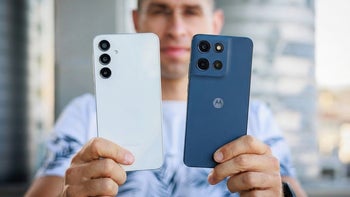All hail the plastic Pixel! (poll results)

There are barely any metal or plastic phones left in today's see of glass sandwich designs, so Google's new Pixel 3a midranger is a refreshing change of pace for some, with their durable bodies that you can just dust off when they hit the pavement. This, however, may take away from their look and feel for some, given that plastic is usually associated with cheaper electronics, even the polycarbonate housing of the Pixel 3a/XL. This is why we asked you last week if, a couple of years after plastic phones went into a coma, you are now bothered by the housing of Google's new midrangers.
It turns out that you are really into polycarbonate. Out of 1281 respondents, 81% said that the plastic housing of the Pixel 3a is not a disadvantage. In the comments, many argue that it makes the phones more durable and something you don't have to baby all the time like phones with a glass back. Moreover, the new Pixels are some of the easiest to repair in recent memory, and the polycarb housing has something to do with that. All in all, there is a good market niche for affordable phones with good specs that transfer the premium design savings directly to the end user, it seems.
The Pixel 3 and Pixel 3 XL were Google's first phones to sport wireless charging, a feature sorely missed on their predecessors, but now we are back to square one with the midrange Pixel 3a and 3a XL that are unapologetically plastic and need plugging in to charge.
Glass looks premium and lets you top up your phone sans cables but it has just as many negatives - it is prone to cracking very easily when dropped, and is a fingerprint magnet. Thus, replacing a shattered rear now costs a pretty penny and is, in the case of iPhones, more expensive to repair than the screen itself.
Follow us on Google News




![Some T-Mobile users might be paying more starting in March [UPDATED]](https://m-cdn.phonearena.com/images/article/176781-wide-two_350/Some-T-Mobile-users-might-be-paying-more-starting-in-March-UPDATED.webp)









Things that are NOT allowed:
To help keep our community safe and free from spam, we apply temporary limits to newly created accounts: